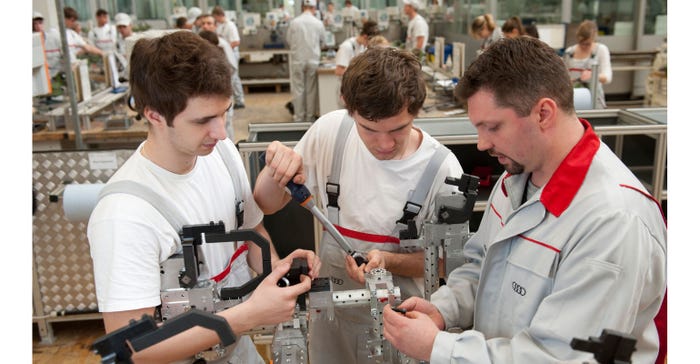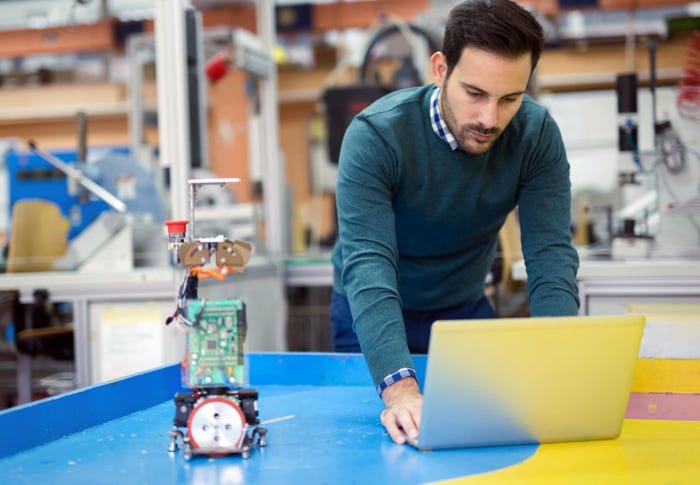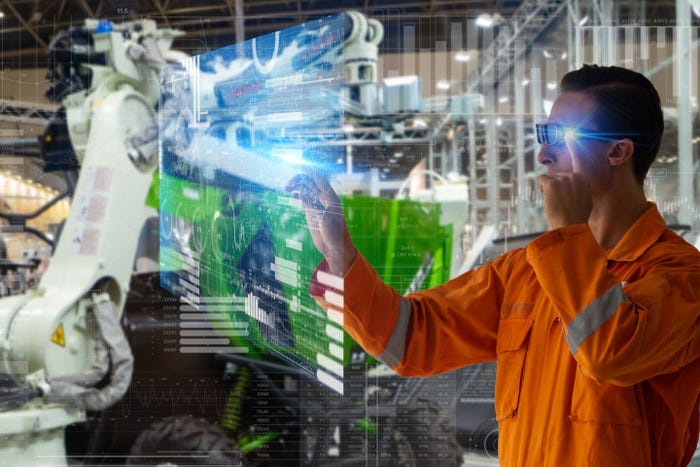Mechatronics vs. IoT: What Do Packaging Lines Really Need?
How can technologies like mechatronics and Internet of Things be used to improve packaging line flexibility and performance?

Not every packaging operation can afford or leverage the latest in technology. But manual and semi-automated packing can only get you so far from a productivity and output point of view.
Mechatronics is helping to improve the packaging line. It that enough in today’s competitive environment? Or is embracing Industry 4.0 and the Industrial Internet of Things (IIoT) your only hope of surviving?
Here’s a look at the issues to help you decide. (See definitions of Mechatronics and IIoT/Industry 4.0 in the accompanying slideshow.)

What mechatronics does best.
“As mechatronics is a blending of mechanical and electrical systems, this has traditionally been at the motor,” says Rick Forsgren, Packaging Industry Business Development Manager at Beckhoff Automation. “What has evolved over the last few years, are systems that incorporate mechanical movement and electrical control on a single machine component.”
This would include systems like Beckhoff’s XTS Intelligent Track Systems or XPlanar Magnetically Levitated Movers, Forsgren explains.
With systems like these, Forsgren notes, companies can take advantage of infinitely customizable asynchronous motion profiles for things like:
• Feeding product into a machine and collated in groups of any size.
• Feeding different products into the same machine and collated into different groups of different sized packages.
• Orienting products for specific needs, including multi-pack readability, efficiency, or display-ready requirements.
• Creating combinations of any product or groups with a simple software change (no tooling changes).
• Instantly changing format or package size without any downtime.
• Creating rainbow packs of any combination.
• Limiting or eliminating buffering between functions by coordinating hand-off from asynchronous feeds to synchronous feeds with infinite pitch control.
The evolution from mechanical to mechatronics to the Internet of Things: Industry 4.0.
Eelco van der Wal, Managing Director of PLCOpen says, “The packaging industry must react quickly to changes in consumer behavior by providing alternative packaging technologies. This must be done by more flexible machines in their production lines. And to provide this flexibility, one must go beyond mechanical solutions to mechatronic alternatives.”
Forsgren agrees. “I would see mechatronics as providing the flexibility to quickly implement format changes.” Mechatronic systems are far more flexible than mechanical systems can be. Especially in the way users interact with the system through the human-machine interface (HMI).
“HMIs have evolved quite a bit,” Forsgren says. “Essentially, customers are demanding more of the HMI than in the past. Changes to the application need to be handled in a simple parameter change in the HMI rather than a programming change that requires personnel to access to the controller. There’s also the continued evolution towards a more modern interface — think of the iPad generation.”

Forsgren sees accelerated movement towards intelligent mechatronic technologies providing the flexibility being demanded by manufacturers to meet the constantly changing packaging material and format changes. End users want machines that will meet their evolving needs for many years. They also want to limit downtime for changeovers. Machines that provide self-analysis on wear parts and can reduce unplanned downtime for repairs and maintenance are also growing in popularity.
Going further, machines that are made up of IIoT devices can collect data on operation, machine health, and maintenance requirements in themselves and report that data directly to local servers or Cloud-based servers, so that the data can be accumulated into a large “data lake” of information about the packaging line and its machinery.
Forsgren says, “I would see IIoT as being a much larger pool of data. Connectivity to mechatronic systems can give us only so much. What’s going on outside the machine?” For example, what are the ambient conditions? He continues, “What’s going on upstream and downstream of the individual operations in a packaging line? What about power quality?
It’s the analysis of data gathered largely by IIoT technologies that gives a manufacturer the insight they need to optimize their control algorithms.
IIoT provides the connectivity to many data points inside — and possibly outside — a system,” Forsgren continues. “I believe manufacturers are interested in both. It’s the analysis of data gathered largely by IIoT technologies that gives a manufacturer the insight they need to optimize their control algorithms. Certainly, some of the data used for optimization can come directly from mechatronic devices, but it is within the context of data gathered from an entire system that real valuable knowledge is derived.” This is what vendors and pundits call Industry 4.0.
It may be that the use of AI (artificial intelligence) is not far off at all. UReason’s new device maintenance apps actually use some features of AI to provide machine learning as the pump or valve accumulates duty cycles. Collecting the data required to optimize device performance is the vital link of the IIoT to the packaging machine. Apps like UReason’s and other “low-code” configurable software, like Ignition! from Inductive Automation, make it practical to move into the Industrial Internet of Things without an entire department full of data scientists. This is the key point.
Packaging machines are cool, in and of themselves. That’s true, but they are designed and built to improve the company’s bottom line. If you can increase uptime with prescriptive maintenance and AI-based failure analysis and prediction, you can add directly to the bottom line.
It is the combination of mechatronics-based packaging lines, IIoT devices, and the ability to store and use the data that can be mined directly from the packaging machines themselves that is the breakthrough application.
It is the combination of mechatronics-based packaging lines, IIoT devices, and the ability to store and use the data that can be mined directly from the packaging machines themselves that is the breakthrough application. When you add to the data lake information from both inside and outside the packaging line, you can make determinations about run length. If you can optimize the operation of the packaging line, and add to it information from customer demand, you can optimize the entire supply chain, increase revenue, and decrease downtime.
This is what the future of Industry 4.0 can give us.
It’s not quite that easy, though.
Connected control of packaging lines, or any plant control system for that matter, opens the plant to increased threat from cyber-attack. There are many mitigation strategies that can, and should, be employed.
But cybersecurity on the plant floor and at the machine level is different from IT-based cybersecurity. As Joe Weiss from Applied Control Solutions has said for years, field devices and edge controllers are generally not protected from cyber-intrusion. This was fine when we were dealing with switches, simple sensors, and relays — even programmable logic controllers (PLCs). But as field devices have gotten smarter, and field controllers have gotten more connected, there have been problems.

When your Hall-Effect motion sensors are directly connected to the Industrial Internet of Things implementation in your plant, they now become vulnerable. And you become vulnerable to malware like Stuxnet, which was designed to interfere with the way sensors and devices were used to control uranium-enrichment centrifuges in Iran.
One of the features of mechanical packaging lines is that they are not intelligent. They simply do their assigned jobs and aren’t holding data, asking for programming information, or capable of having their inputs and outputs spoofed. You know that the signal coming from a position sensor, or a speed sensor or similar device is accurate and can’t be changed by a bad actor. Mechatronic packaging lines are not much more insecure. It is when you connect the packaging line to the plant network, and to the Industrial Internet of Things that problems begin.
Does the value of the improvements to your systems outweigh the potential of cyber damage to those systems? Is the improved performance, throughput, flexibility, and increased uptime worth the potential for cyber-damage?
Former deputy director of cybersecurity at the Department of Homeland Security, Marty Edwards, famously used to say, “If you don’t want your data stolen, don’t connect it to the Internet.” But there is an important decision to be made. Does the value of the improvements to your systems outweigh the potential of cyber damage to those systems? Is the improved performance, throughput, flexibility, and increased uptime worth the potential for cyber-damage?
You’ll have to decide that for yourself.
About the Author(s)
You May Also Like




